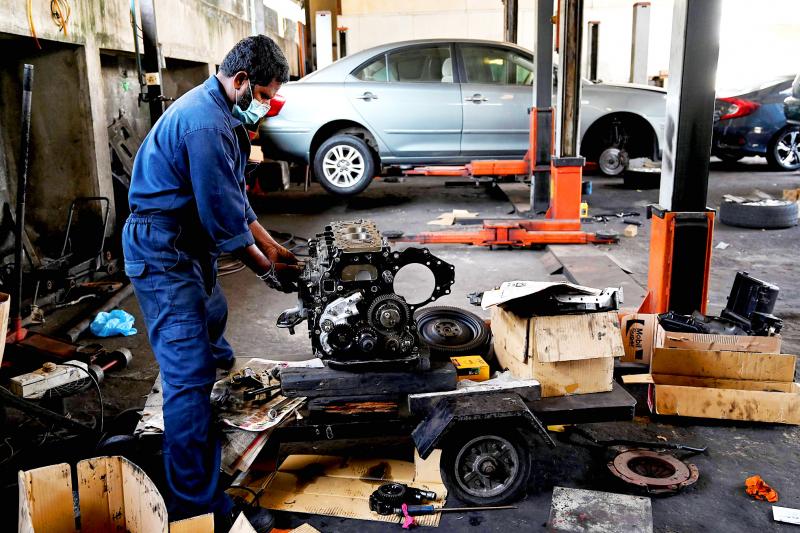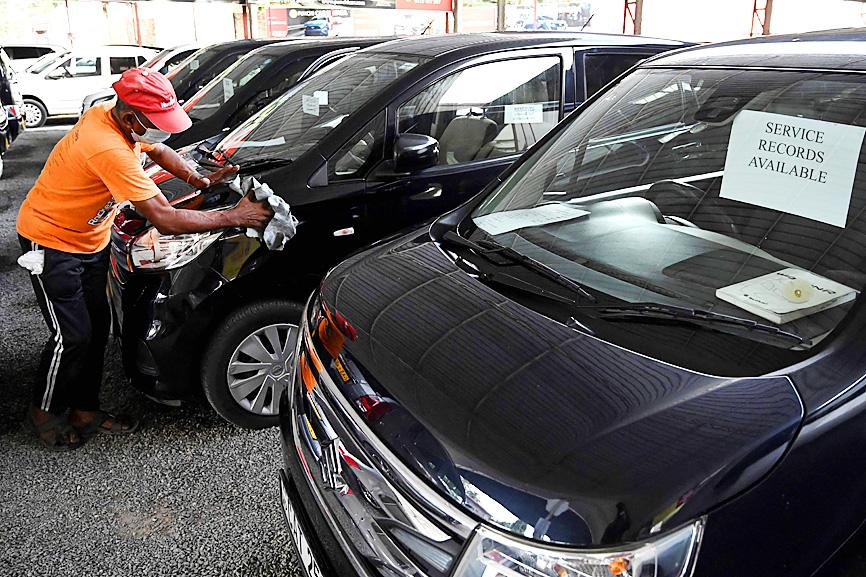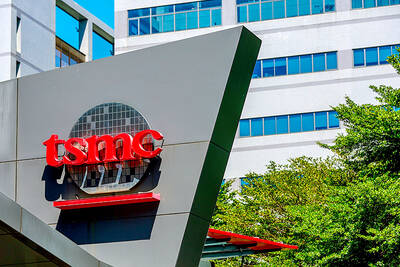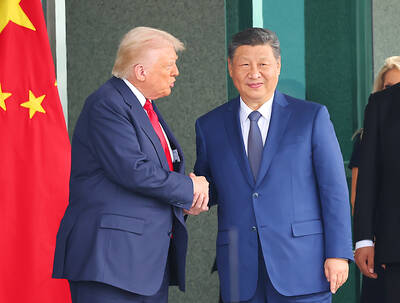Supermarket shelves are bare and restaurants cannot serve meals, but Sri Lanka’s economic crisis is a bonanza for used auto dealers, with vehicle shortages pushing prices higher than a house in a nice area.
The island nation of 22 million is on the brink of bankruptcy, inflation is red hot and the government has barred a range of “non-essential” imports to save US dollars needed to buy food, medicine and fuel.
In the vehicle market, this two-year ban has kept factory-fresh automobiles off local roads, forcing desperate buyers to pay some of the world’s highest prices for beaten-up compacts and no-frills family sedans.

Photo: AFP
Anthony Fernando spent a recent weekend coursing through sales lots in the Colombo outskirts on behalf of his daughter, who has tried to find an affordable set of wheels for nearly a year.
“She was thinking that prices will come down,” but now she is “paying for procrastinating,” the 63-year-old said.
Prices have gone “beyond the reach of a common person,” he said.

Photo: AFP
A five-year-old Toyota Land Cruiser was on offer online for an eye-watering 62.5 million rupees (US$309,654) — triple the pre-ban rate, and enough to buy a house in a middle-class Colombo neighborhood or a new luxury apartment in the city center.
A decade-old Fiat five-seater with a busted engine that might be stripped for parts elsewhere was listed at US$8,250 — more than twice Sri Lanka’s average yearly income.
“A car and a house are symbols of success,” said a grinning Sarath Yapa Bandara, the owner of one of the capital’s biggest dealerships. “That is why most people are willing to buy even at these high prices.”
‘OUT OF THIS WORLD’
Vehicle ownership remains a virtual necessity in the traffic-snarled streets of Colombo, where a ramshackle bus and rail network was already struggling with overcrowding.
The number of taxis has also fallen sharply, with drivers selling their cabs to cash in on the dizzying prices, and those still working charging double their old fares or more.
“You must have your own car,” said Udaya Hegoda Arachchi, another buyer preparing to bite the bullet at a dealership.
“We can’t expect prices to come down anytime soon, given the economic situation in the country,” he said.
COVID-19 has sent Sri Lanka into a tailspin, drying up all-important earnings from tourism and foreign remittances.
In March 2020, the government brought in a wide-ranging import ban, including on new vehicles, to stop foreign currency from leaving the country.
However, the policy has not been able to staunch the outflow of US dollars, and has instead left the nation struggling to source critical goods.
Food retailers have rationed rice, restaurants have shuttered, because they cannot find cooking gas, while cash-strapped power utilities unable to afford oil have imposed rolling blackouts. Farmers have even run out of fertilizer.
CHINESE DEBT
Rating agencies have warned that Sri Lanka might default soon, although the government has pledged to meet its commitments.
It is trying to renegotiate its Chinese debts with Beijing.
The import ban has also left vehicle parts in short supply, meaning drivers are at risk of being stranded after a breakdown.
Ravi Ekanayake said that his Colombo repair garage was doing a roaring trade from owners unable to afford the astronomical costs of switching to a new vehicle.
“But parts are scarce. It is a catch-22: You either get caught with an old car without parts or you don’t have the money to buy a new car,” he said.
JB Securities chief executive and financial analyst Murtaza Jafferjee said the prices also underscored a problem caused by excessive money printing by a cash-strapped central bank, with “too much money chasing too few goods.”
The prices were also increasing transport costs and adding to inflation, which hit a record 14 percent last month, he said.
“When vehicles become unaffordable for a segment of society, their activities will be limited. Then we will also see a loss of economic output,” Jafferjee said. “We are about to collapse and not many people appreciate the depth of the problem.”

RUN IT BACK: A succesful first project working with hyperscalers to design chips encouraged MediaTek to start a second project, aiming to hit stride in 2028 MediaTek Inc (聯發科), the world’s biggest smartphone chip supplier, yesterday said it is engaging a second hyperscaler to help design artificial intelligence (AI) accelerators used in data centers following a similar project expected to generate revenue streams soon. The first AI accelerator project is to bring in US$1 billion revenue next year and several billion US dollars more in 2027, MediaTek chief executive officer Rick Tsai (蔡力行) told a virtual investor conference yesterday. The second AI accelerator project is expected to contribute to revenue beginning in 2028, Tsai said. MediaTek yesterday raised its revenue forecast for the global AI accelerator used

Taiwan Semiconductor Manufacturing Co (TSMC, 台積電) has secured three construction permits for its plan to build a state-of-the-art A14 wafer fab in Taichung, and is likely to start construction soon, the Central Taiwan Science Park Bureau said yesterday. Speaking with CNA, Wang Chun-chieh (王俊傑), deputy director general of the science park bureau, said the world’s largest contract chipmaker has received three construction permits — one to build a fab to roll out sophisticated chips, another to build a central utility plant to provide water and electricity for the facility and the other to build three office buildings. With the three permits, TSMC

TEMPORARY TRUCE: China has made concessions to ease rare earth trade controls, among others, while Washington holds fire on a 100% tariff on all Chinese goods China is effectively suspending implementation of additional export controls on rare earth metals and terminating investigations targeting US companies in the semiconductor supply chain, the White House announced. The White House on Saturday issued a fact sheet outlining some details of the trade pact agreed to earlier in the week by US President Donald Trump and Chinese President Xi Jinping (習近平) that aimed to ease tensions between the world’s two largest economies. Under the deal, China is to issue general licenses valid for exports of rare earths, gallium, germanium, antimony and graphite “for the benefit of US end users and their suppliers

Dutch chipmaker Nexperia BV’s China unit yesterday said that it had established sufficient inventories of finished goods and works-in-progress, and that its supply chain remained secure and stable after its parent halted wafer supplies. The Dutch company suspended supplies of wafers to its Chinese assembly plant a week ago, calling it “a direct consequence of the local management’s recent failure to comply with the agreed contractual payment terms,” Reuters reported on Friday last week. Its China unit called Nexperia’s suspension “unilateral” and “extremely irresponsible,” adding that the Dutch parent’s claim about contractual payment was “misleading and highly deceptive,” according to a statement